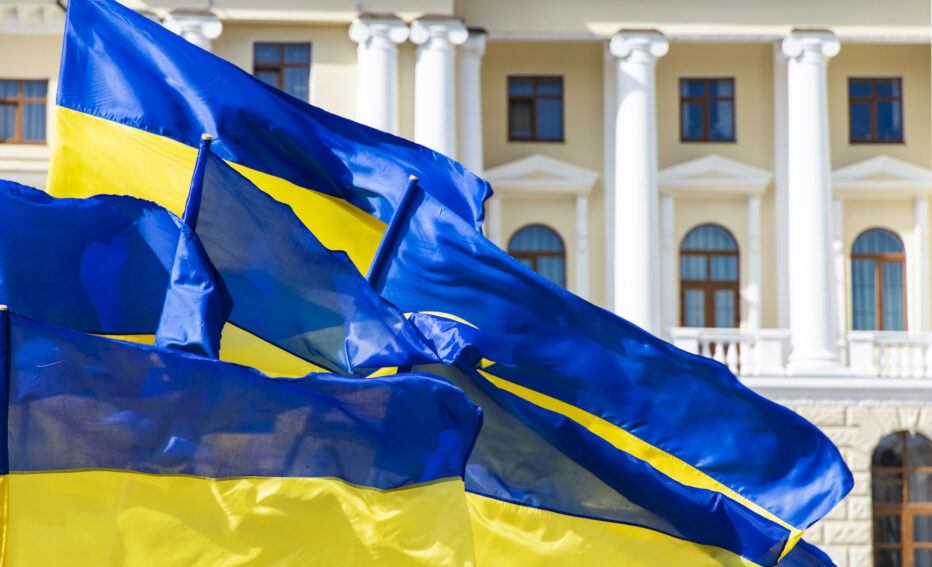YRITTÄJÄ, tule mukaan omiesi pariin! Liity Yrittäjiin.

Starting work made easier for Ukrainian refugees
An unlimited right to work now begins when a temporary protection application is submitted. The process is expedited through part-automation. If all the necessary information and pictures are in order, the partly automated system can give a proposed decision, which the authority can then approve.
Finland has simplified access to employment for refugees of the war in Ukraine. People who receive temporary protection status have an unlimited right to work as soon as they have completed the temporary protection application.
The applicant does not need a residence permit or residence permit card to work. Proof of a registered application is enough.
Applicants can also register with the TE Office as jobseekers and receive services to support their job search.
Temporary protection is based on the EU’s Temporary Protection Directive. The starting point of the directive is that a person under its scope receives protection. For this reason, it does not specify when the rights pertaining to temporary protection begin.
European Commission clarifies interpretation
The Temporary Protection Directive has been approved jointly by the EU countries’ interior ministers. Temporary protection guarantees a person the right work, reside in the country for one year, attend school, and receive healthcare and social services.
Initially, Finland granted people with temporary protection the right to work later than other countries. For example, Estonia has issued work permits in as little as a few hours. Until Friday 8 April, refugees in Finland had to wait for a decision and a residence permit card. Depending on application volumes and the postal service, that could take up to two weeks.
The European Commission has now given further guidance on interpreting the directive: the person’s right to work begins as soon as he or she has submitted a temporary protection application and received proof the application has been registered. If the person is later found not to be entitled to temporary protection, the application may be declined and the right to work rescinded.
The idea behind the Temporary Protection Directive has always been to lighten the burden on government, as asylum applications are always processed individually.
“The process has been expedited, and more resources have been allocated to decision-making,” Antti Lehtinen, director of the asylum unit at the Finnish Immigration Service, says.
Concerns about accuracy may also have slowed down decision-making before now. With the large number of applications, some were registered faultily, with details such as photos missing. Corrections slowed down decisions.
Now, the process is expedited through partial automation. If all the necessary information and pictures are in order, the partly automated system can give a proposed decision, which the authority can then approve.
“The law does not allow a completely automated process. The final decision is always made by a person,” Lehtinen says.
Pay and working conditions apply to all
Over four million Ukrainians have already been forced to flee the war in their homeland for other countries. An estimated 40,000–80,000 of them will come to Finland.
The Ministry of Economic Affairs and Employment has issued instructions for Ukrainian refugees explaining their rights, where to access services, and where to turn if they experience ill-treatment, such as at work. A person with temporary protection status can register as a jobseeker with the TE Office and access services to support employment, such as language courses.
Many Ukrainian refugees are of working age. The Ministry of Economic Affairs and Employment says that they have a lot of skills and that many of them are well-educated. The Ministry’s instructions provide information about the rights to work that come with residence permits and visa-free status, as well as the employment services available for people with temporary protection status.
The instructions also state that the agreed pay levels and working conditions in Finland apply to everyone, and that no one can be made to pay in exchange for a job or to pass on a job.
The instructions are distributed to arrivals from Ukraine in ports, airports, reception centres and various information offices, as well as on social media. In addition to Finnish, the instructions are available in Ukrainian, Russian, Swedish and English.
Not all refugees seen in statistics yet
More than 15,000 refugees of the war in Ukraine have already sought international protection in Finland. Most of them have applied for temporary protection.
The total numbers of those fleeing the war to Finland is higher, though, as Ukrainians holding biometric passports may come here for up to three months without a visa. However, the right to work of those arriving without a visa is strictly limited.
Approximately 7,200 Ukrainians resided in Finland permanently before the war. In recent years, many Ukrainians have also worked seasonally in agriculture and forestry.

Elina Hakola
elina.hakola@yrittajat.fi